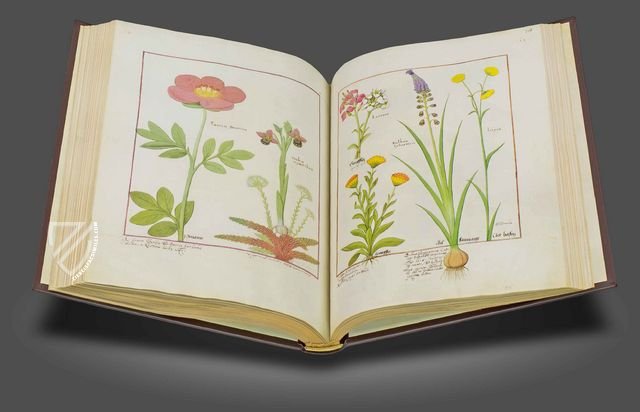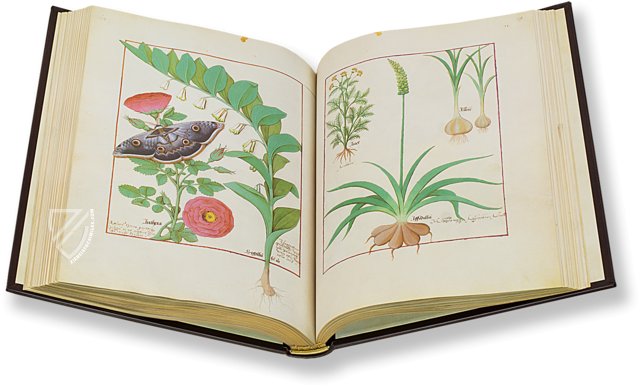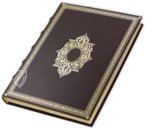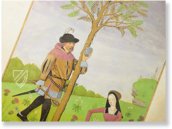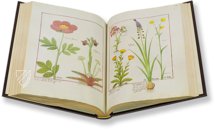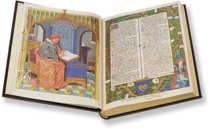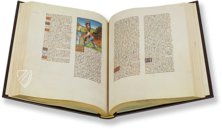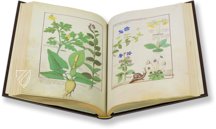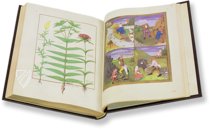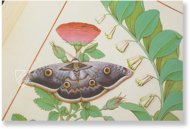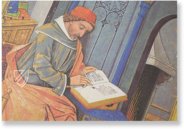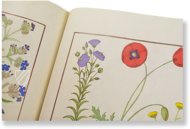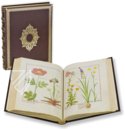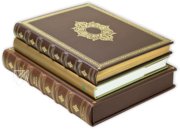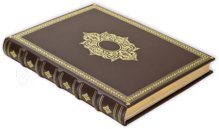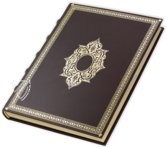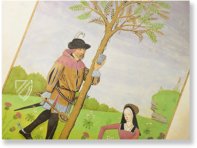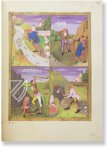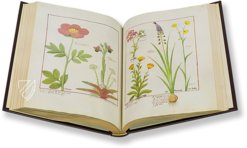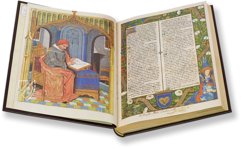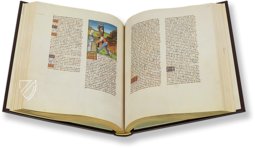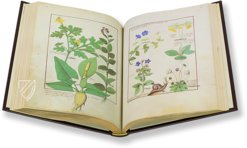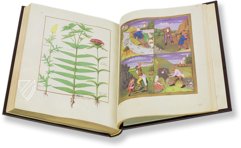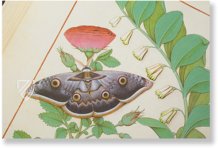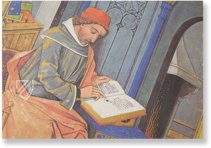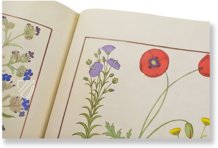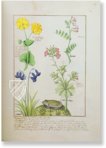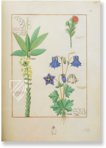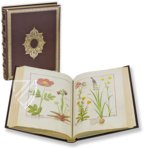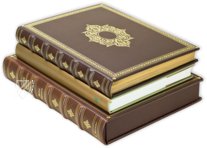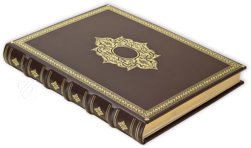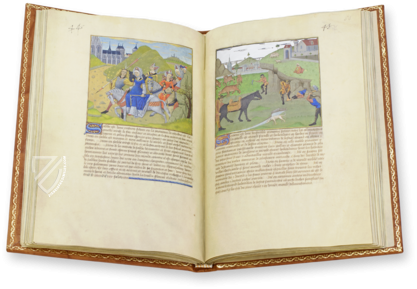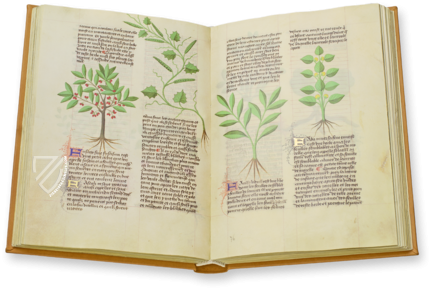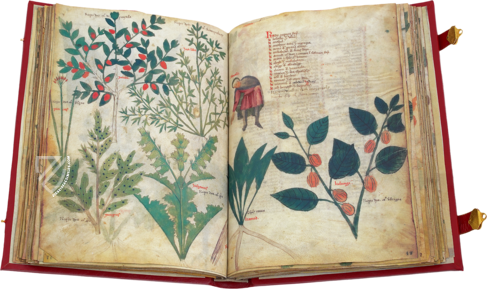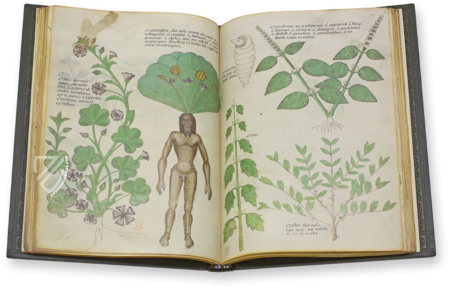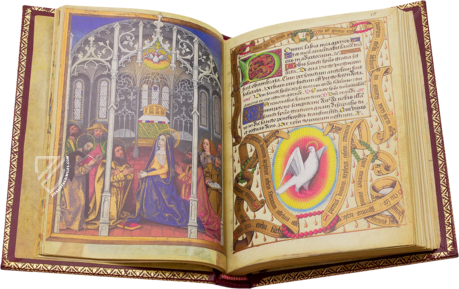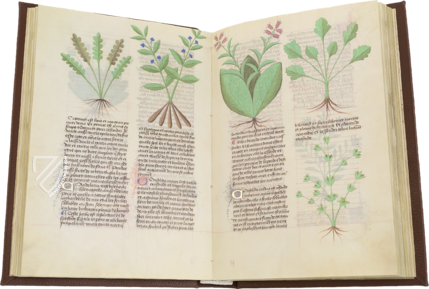Saint Petersburg Book of Simple Medicines
(3,000€ - 7,000€)
The text of the Book of Simple Medicines was originally written by Mattheaus Platerius at the medical school of Salerno during the 12th century as a how-to manual for medicine as it was practiced in the Middle Ages. This fine manuscript was created in France during the early-15th century at the behest of Count Charles of Angoulême and his wife Louise of Savoy and is regarded as one of the most beautiful examples of late medieval book art. It was adorned by the illuminator Robinet Testard with 115 masterful miniatures. Aside from highly detailed and accurate illustrations of medicinal plants as well as some insects and animals, various labors such as harvesting herbs or mining for minerals are depicted with great realism. Testard’s elegant, naturalistic, and delicately colored illustrations make this manuscript arguably the most beautiful specimen of Platerius’ text, which was a cornerstone of medieval medicine.
Saint Petersburg Book of Simple Medicines
The medicine of the Middle Ages traces back to the knowledge of ancient scholars. Medicines made from plants and animals as well as mineral substances were used for the treatment of various sicknesses. The Book of Simple Medicines is a comprehensive how-to manual, which contains the information about the properties and compounds of natural medicine. The highly detailed work is decorated with an astonishing variety of beautiful book illustrations. It is one of the most noteworthy codices of medieval European art.
French Book Art
The codex originated from 15th century France and was produced for Count Charles of Angoulême and his wife Louise of Savoy. It consists of 5 book sections. These are concerned with plants and flowers, trees and resins, metals and minerals, animal products, and other materials. Following these explanations is a collection of 115 outstanding miniatures. The French text is based on the Latin explanations of the physicist Mattheaus Platerius, De medicinis simplicibus. In the 12th century, he compiled one of the most influential medical how-to manuals, which was translated into various languages during the Middle Ages. This treatise was enlarged with new findings in the French book of medicines.
Characteristic Painting
The breath-taking miniatures of the book were very likely produced by the master Robinet Testard. The artist almost never signed his works, which complicates an unambiguous assignment. To be sure, Testard was employed at the court of Count Charles of Angoulême as a princely valet of the family at the end of the 15th century. The depictions show the botanical, faunal, and mineral substances and sometimes the persons for whom the use of these medicinal substances were intended. Sometimes the scenes were ennobled with elements of gold leaf. This artistically valuable treatise about the medicine of the Middle Ages is counted among the most beautifully illuminated manuscripts of the French Renaissance. Today the original edition of the document is found in the Russian National Library in St. Petersburg.
Codicology
- Alternative Titles
- Libro de los Medicamentos Simples
Livre des Simples Médecines
Libro delle Medicine Semplici
Buch der einfachen Heilmittel
Libro delle Medicine Semplici
Livro dos Medicamentos Simples
Book of Simple Medicines - Size / Format
- 340 pages / 35.5 × 26.0 cm
- Origin
- France
- Date
- Late 15th century
- Epochs
- Style
- Illustrations
- 386 miniatures
- Patron
- Count Charles of Angoulême (1459–1496) and his wife Louise of Savoy (1476-1531)
- Artist / School
- Matthaeus Platearius, a 12th Century physician from the medical school at Salerno (author)
Robinet Testard (1470–1531) (illuminator)
Saint Petersburg Book of Simple Medicines
Frog
Among the elegant and artful depictions of various flowers with medical applications, we find this naturalistic illustration of a sweet-looking frog. These amphibians are an important part of the ecosystem and possess cultural importance across the world. In folklore, frogs are used as metaphors for those possessing hidden talents in spite of their appearance. Medieval theologians distinguished between land and water frogs, regarding the former as righteous while the latter were sinful.
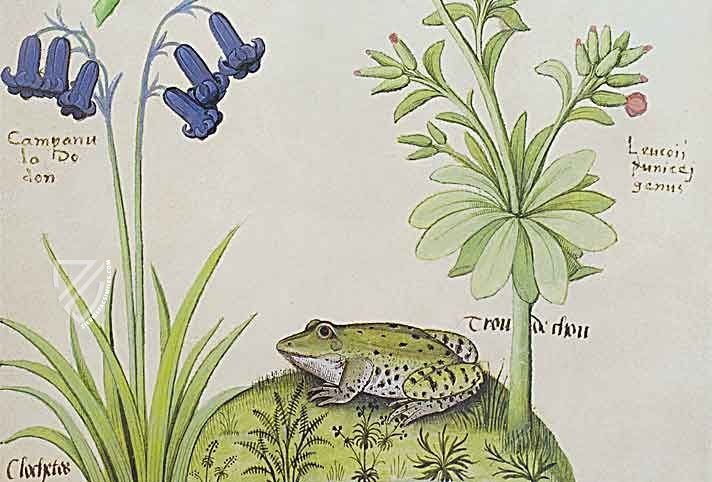
Saint Petersburg Book of Simple Medicines
Obtaining Aloe, Gold, Alum, and Antimonite
Robinet Testard’s masterful medical handbook is not only concerned with botanical medicines, but with the use of animal and mineral substances as well. The work includes depictions of how these substances were obtained, such as in the four scenes presented here.
Three of these images show men digging for various mineral substances, but the fourth in the upper-eft corner is odd: it appears to show a man fishing for sticks in a river. Using a net on a long pole, the man is acquiring “Aloe”, but this term should not be confused with the genus of succulent plants, but rather a resin made from saturated wood, probably agarwood, also known as aloeswood. It has been mentioned in medical texts as old as the 1st century Materia Medica by Dioscorides.
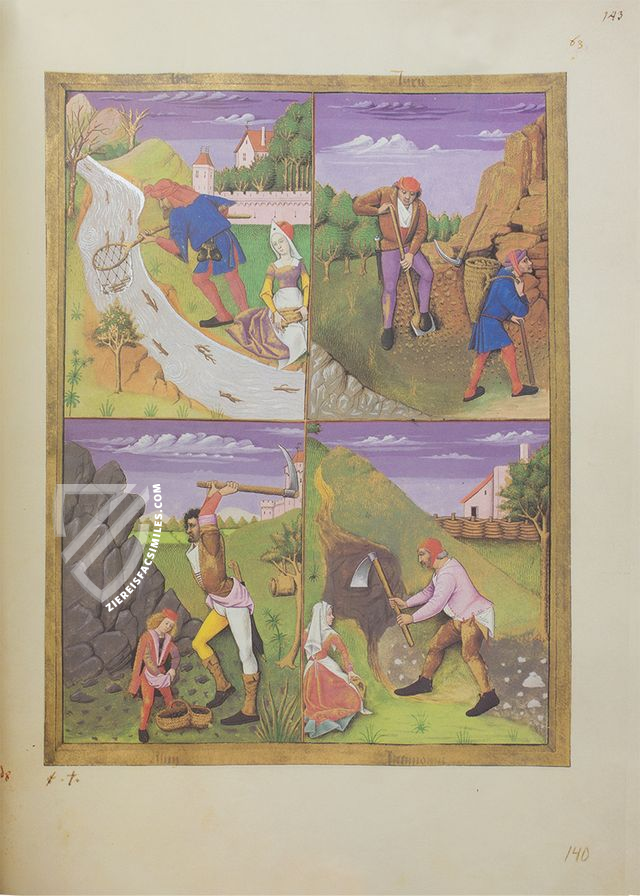
#1 Libro de los Medicamentos Simples
Languages: Spanish, English
(3,000€ - 7,000€)
- Treatises / Secular Books
- Apocalypses / Beatus
- Astronomy / Astrology
- Bestiaries
- Bibles / Gospels
- Chronicles / History / Law
- Geography / Maps
- Saints' Lives
- Islam / Oriental
- Judaism / Hebrew
- Single Leaf Collections
- Leonardo da Vinci
- Literature / Poetry
- Liturgical Manuscripts
- Medicine / Botany / Alchemy
- Music
- Mythology / Prophecies
- Psalters
- Other Religious Books
- Games / Hunting
- Private Devotion Books
- Other Genres
- Afghanistan
- Armenia
- Austria
- Belgium
- Colombia
- Croatia
- Czech Republic
- Denmark
- Egypt
- Ethiopia
- France
- Germany
- Hungary
- India
- Iran
- Iraq
- Israel
- Italy
- Japan
- Luxembourg
- Mexico
- Morocco
- Netherlands
- Peru
- Poland
- Portugal
- Russia
- Serbia
- Spain
- Sri Lanka
- Sweden
- Switzerland
- Syria
- Turkey
- Ukraine
- United Kingdom
- United States
- Uzbekistan
- Aboca Museum
- Ajuntament de Valencia
- Akademie Verlag
- Akademische Druck- u. Verlagsanstalt (ADEVA)
- Aldo Ausilio Editore - Bottega d’Erasmo
- Alecto Historical Editions
- Alkuin Verlag
- Almqvist & Wiksell
- Amilcare Pizzi
- Andreas & Andreas Verlagsbuchhandlung
- Archa 90
- Archiv Verlag
- Archivi Edizioni
- Arnold Verlag
- ARS
- Ars Magna
- ArtCodex
- AyN Ediciones
- Azimuth Editions
- Badenia Verlag
- Bärenreiter-Verlag
- Belser Verlag
- Belser Verlag / WK Wertkontor
- Benziger Verlag
- Bernardinum Wydawnictwo
- BiblioGemma
- Biblioteca Apostolica Vaticana (Vaticanstadt, Vaticanstadt)
- Bibliotheca Palatina Faksimile Verlag
- Bibliotheca Rara
- Boydell & Brewer
- Bramante Edizioni
- Brepols Publishers
- British Library
- C. Weckesser
- Caixa Catalunya
- Canesi
- CAPSA, Ars Scriptoria
- Caratzas Brothers, Publishers
- Carus Verlag
- Circulo Cientifico
- Club Bibliófilo Versol
- Club du Livre
- CM Editores
- Collegium Graphicum
- Collezione Apocrifa Da Vinci
- Comissão Nacional para as Comemorações dos Descobrimentos Portugueses
- Coron Verlag
- Corvina
- CTHS
- D. S. Brewer
- De Agostini/UTET
- De Schutter
- Deuschle & Stemmle
- Deutscher Verlag für Kunstwissenschaft
- DIAMM
- Droz
- E. Schreiber Graphische Kunstanstalten
- Ediciones Boreal
- Ediciones Grial
- Ediclube
- Edições Inapa
- Edilan
- Editalia
- Edition Georg Popp
- Edition Leipzig
- Edition Libri Illustri
- Editiones Reales Sitios S. L.
- Éditions de l'Oiseau Lyre
- Editions Medicina Rara
- Editorial Casariego
- Editorial Mintzoa
- Editrice Antenore
- Editrice Velar
- Edizioni Edison
- Egeria, S.L.
- Eikon Editores
- Electa
- Enciclopèdia Catalana
- Eos-Verlag
- Ephesus Publishing
- Eugrammia Press
- Extraordinary Editions
- Fackelverlag
- Facsimila Art & Edition
- Facsimile Editions Ltd.
- Facsimilia Art & Edition Ebert KG
- Faksimile Verlag
- Feuermann Verlag
- Folger Shakespeare Library
- Franco Cosimo Panini Editore
- Friedrich Wittig Verlag
- Fundación Hullera Vasco-Leonesa
- G. Braziller
- Gabriele Mazzotta Editore
- Gebr. Mann Verlag
- Gesellschaft für graphische Industrie
- Getty Research Institute
- Giovanni Domenico de Rossi
- Giunti Editore
- Graffiti
- Grafica European Center of Fine Arts
- Guido Pressler
- Guillermo Blazquez
- H. N. Abrams
- Harrassowitz
- Helikon
- Hendrickson Publishers
- Henning Oppermann
- Herder Verlag
- Hes & De Graaf Publishers
- Hoepli
- Hortus Deliciarum
- Houghton Library
- Hugo Schmidt Verlag
- Idion Verlag
- Il Bulino, edizioni d'arte
- ILte
- Imago
- Insel Verlag
- Instituto de Estudios Altoaragoneses
- Instituto Nacional de Antropología e Historia
- Istituto dell'Enciclopedia Italiana - Treccani
- Istituto Ellenico di Studi Bizantini e Postbizantini
- Istituto Geografico De Agostini
- Istituto Poligrafico e Zecca dello Stato
- Italarte Art Establishments
- J. Thorbecke
- Jan Thorbecke Verlag
- Johnson Reprint Corporation
- Jugoslavija
- Karl W. Hiersemann
- Kasper Straube
- Kaydeda Ediciones
- Konrad Kölbl Verlag
- Kurt Wolff Verlag
- La Liberia dello Stato
- La Linea Editrice
- La Meta Editore
- Lambert Schneider
- Landeskreditbank Baden-Württemberg
- Leo S. Olschki
- Les Incunables
- Library of Congress
- Libreria Musicale Italiana
- Lichtdruck
- Lito Immagine Editore
- Lumen Artis
- Lund Humphries
- M. Moleiro Editor
- Maison des Sciences de l'homme et de la société de Poitiers
- Manuscriptum
- Maruzen-Yushodo Co. Ltd.
- MASA
- McGraw-Hill
- Militos
- Millennium Liber
- Müller & Schindler
- National Library of Wales
- Neri Pozza
- Nova Charta
- Oceanum Verlag
- Odeon
- Orbis Mediaevalis
- Orbis Pictus
- Österreichische Staatsdruckerei
- Oxford University Press
- Pageant Books
- Parzellers Buchverlag
- Patrimonio Ediciones
- Pattloch Verlag
- PIAF
- Pieper Verlag
- Plon-Nourrit et cie
- Prestel Verlag
- Princeton University Press
- Prisma Verlag
- Priuli & Verlucca, editori
- Pro Sport Verlag
- Propyläen Verlag
- Pytheas Books
- Quaternio Verlag Luzern
- Reales Sitios
- Recht-Verlag
- Reichert Verlag
- Reichsdruckerei
- Riehn & Reusch
- Roberto Vattori Editore
- Rosenkilde and Bagger
- Roxburghe Club
- Salerno Editrice
- Sarajevo Svjetlost
- Schöck ArtPrint Kft.
- Scolar Press
- Scrinium
- Scripta Maneant
- Scriptorium
- Siloé, arte y bibliofilia
- SISMEL - Edizioni del Galluzzo
- Sociedad Mexicana de Antropología
- Sorli Ediciones
- Stainer and Bell
- Styria Verlag
- Sumptibus Pragopress
- Szegedi Tudomànyegyetem
- Taberna Libraria
- Tarshish Books
- Taschen
- Tempus Libri
- Testimonio Compañía Editorial
- Thames and Hudson
- The Clear Vue Publishing Partnership Limited
- The Facsimile Codex
- The Folio Society
- The Marquess of Normanby
- The Richard III and Yorkist History Trust
- Tip.Le.Co
- TouchArt
- TREC Publishing House
- TRI Publishing Co.
- Trident Editore
- Typis Regiae Officinae Polygraphicae
- Universidad de Granada
- University of California Press
- University of Chicago Press
- Urs Graf
- Vallecchi
- Van Wijnen
- VCH, Acta Humaniora
- VDI Verlag
- Verlag für Regionalgeschichte
- Verlag Styria
- Vicent Garcia Editores
- W. Turnowsky
- Wiener Mechitharisten-Congregation (Wien, Österreich)
- Wissenschaftliche Buchgesellschaft
- Xuntanza Editorial
- Zollikofer AG

